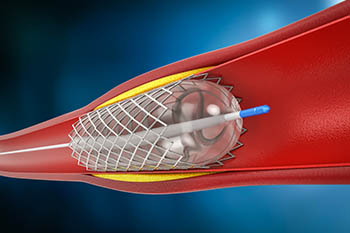Emergency Angioplasty
 Emergency angioplasty is a life-saving emergency procedure performed in a cardiac catheterization lab to restore blood flow to the heart. By quickly locating and treating the site of a blockage, emergency angioplasty reduces damage to heart muscle and helps to preserve heart function. Every second impacts your chance for survival and recovery.
Emergency angioplasty is a life-saving emergency procedure performed in a cardiac catheterization lab to restore blood flow to the heart. By quickly locating and treating the site of a blockage, emergency angioplasty reduces damage to heart muscle and helps to preserve heart function. Every second impacts your chance for survival and recovery.
Saving lives with fast door-to-balloon times
Trinity Health Mid-Atlantic facilities are among the most successful hospitals in the nation performing emergency angioplasty for heart attacks. Our door-to-balloon times are under the national average. Door-to-balloon time is the timeframe from a patient’s arrival at the hospital to the physician’s inflation of the angioplasty balloon within a blocked artery.
Time is heart muscle – know the signs of heart attack
If you experience heart attack symptoms, call 9-1-1, so emergency responders can begin your diagnosis and treatment on your way to the hospital.
What are the warning signs and symptoms of a heart attack?
- Moderate to severe chest pain
- Dizziness
- Shortness of breath
- Nausea
- Radiating pain in the arms and chest
Women may have symptoms that differ from men. Chest pain can be a key clue, but a woman’s pain may be in the back, arm, neck, shoulder and/or throat. Also, women will typically have more “non-pain” symptoms than men. These include vomiting, nausea, fatigue and shortness of breath.

